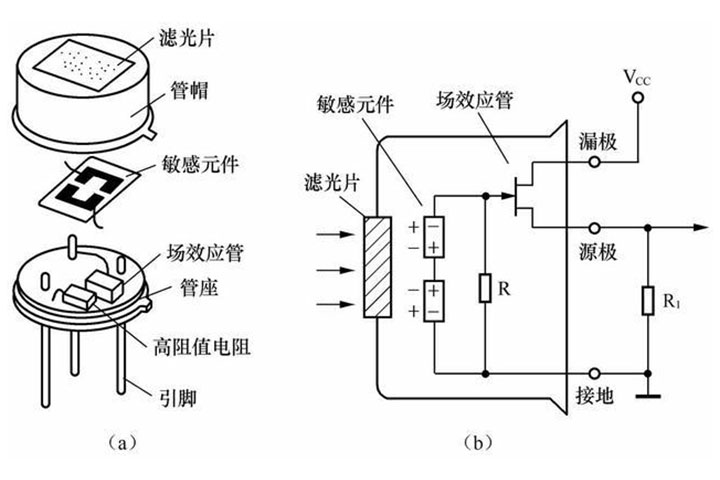Thermoelectric human infrared sensor is a device that converts infrared radiation emitted by humans or animals into electrical signals. It can be used to detect the presence of the human body and is therefore widely used in electronic products such as security devices, anti-theft alarms, induction doors, automatic lights, and smart toys.

Thermoelectric infrared sensors can detect infrared radiation emitted by the human body, but the detection distance is relatively close, usually within 2 meters. In order to increase the detection distance, a Fresnel lens is usually installed in front of the light receiving surface of the pyroelectric motion sensor, which can detect the lens. The distance exceeds 10m.
Lenses are usually made of transparent plastic and are divided into several equal parts according to a certain manufacturing method. Plastic Fresnel lenses have two functions: one is to focus light, and the other is to divide the detection area into several bright and dark areas. When a person enters a bright area of the detection zone, the infrared light emitted by the human body is focused by the corresponding lens part of the bright area, and then irradiated onto the sensitive element through the filter of the sensor. When a person walks into the dark, the sensitive element will generate voltage. When in this area, the infrared light of the human body cannot reach the sensitive element, and the voltage at both ends of the sensitive element will change, that is, the voltage at both ends of the sensitive element will change with the presence or absence of light. The voltage after the change is amplified by FET and output. The frequency of the sensor output signal is related to the speed at which a person moves between bright and dark areas within the detection range. The faster the movement speed, the higher the output signal frequency. If the person does not move within the detection range, the sensor outputs a fixed voltage.

